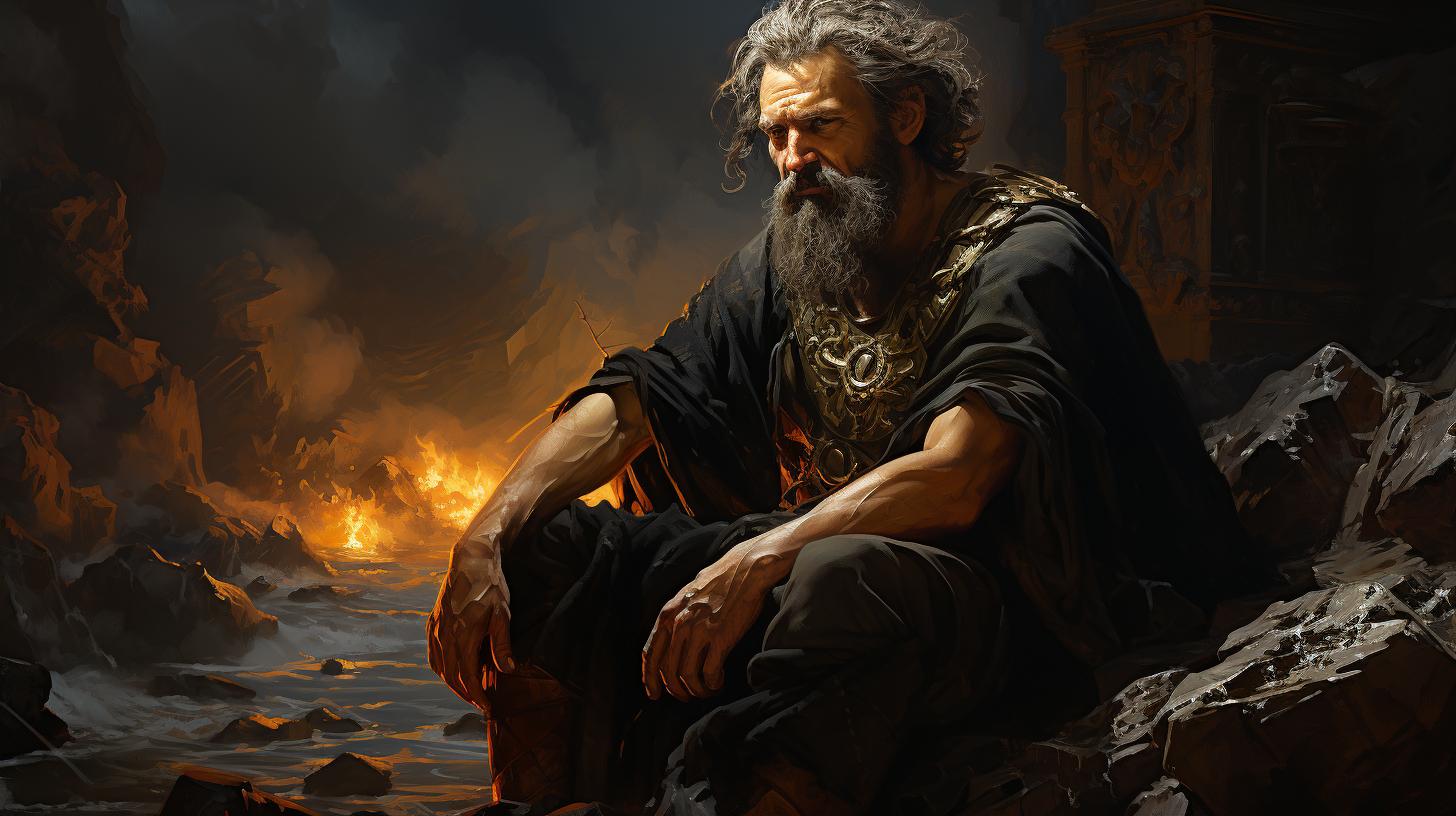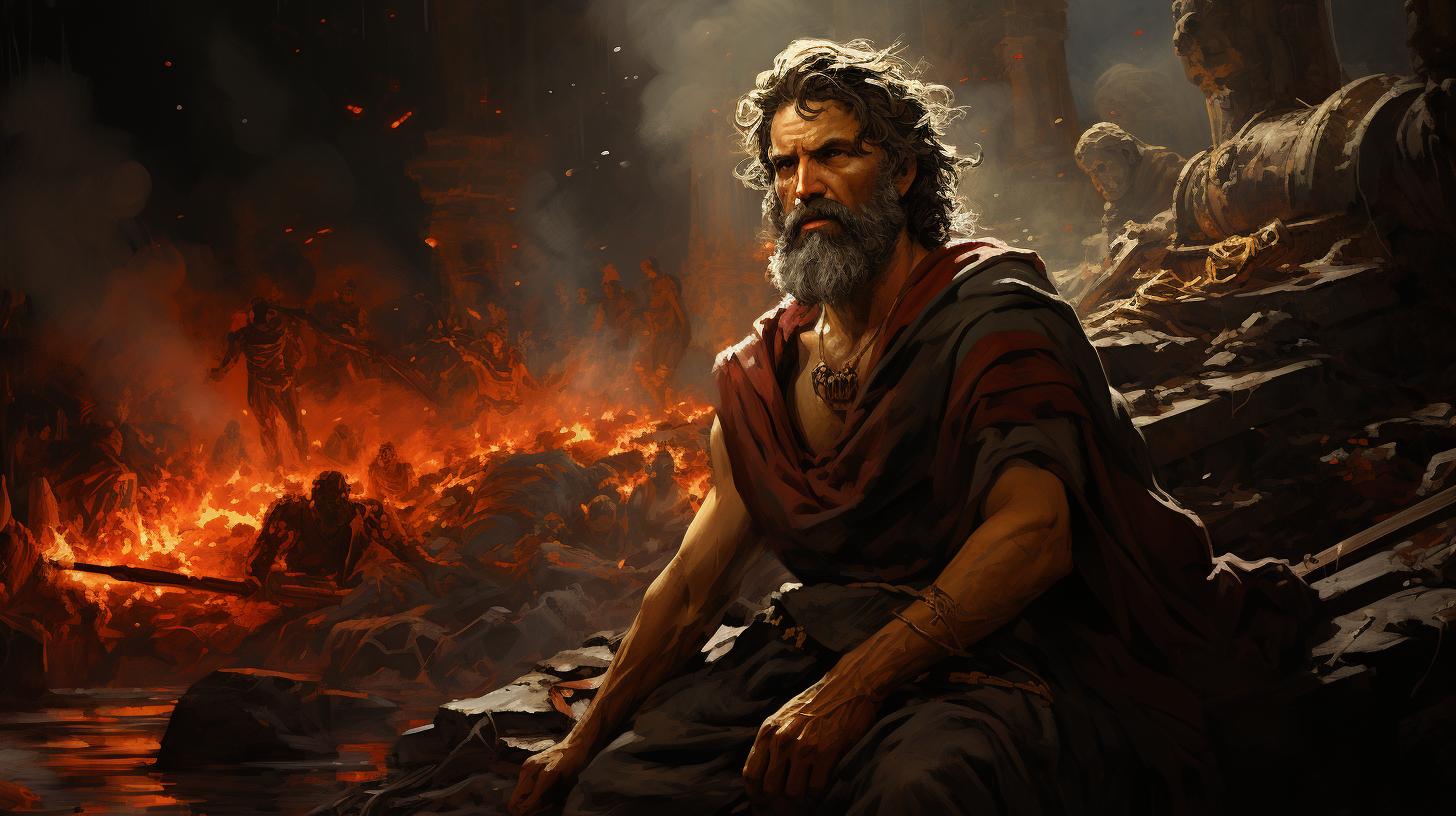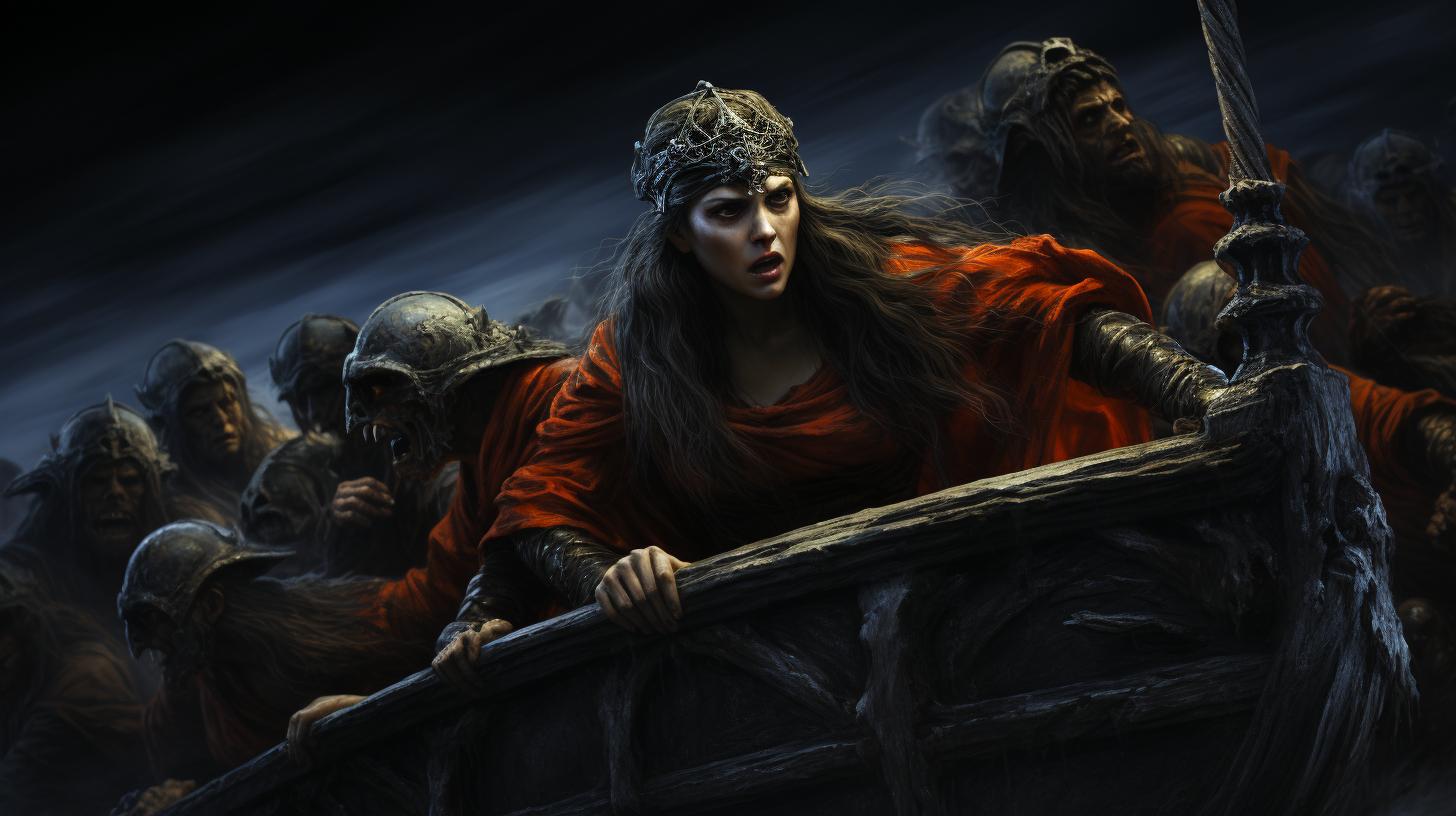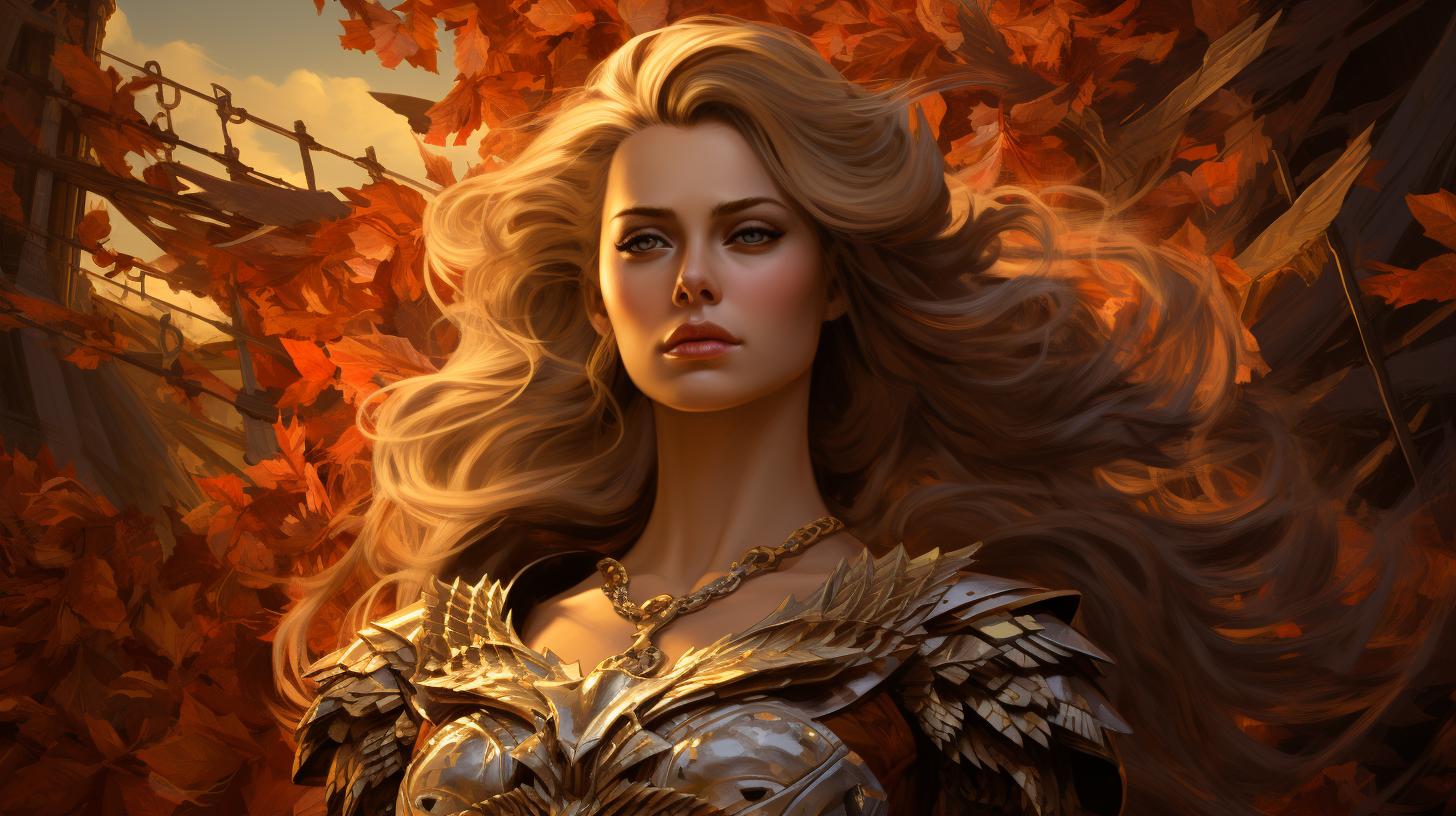Greek Mythology Odysseus: The Epic Journey of the Brave Hero

In Greek mythology, Odysseus, also known as Ulisses, is a prominent character and the hero of Homer’s epic poem, the Odyssey. He was the king of Ithaca, known for his bravery, intelligence, and leadership.
Odysseus played a crucial role in the Trojan War and embarked on a journey filled with trials and adventures. Upon his return to Ithaca, he faced challenges at home but ultimately reclaimed his kingdom.
Odysseus’ story has become synonymous with epic journeys and courage.
The journey of Odysseus is filled with encounters with mythical creatures and tests of his strength and wit. From his confrontation with the Cyclops Polyphemus to navigating the treacherous Scylla and Charybdis, Odysseus overcame countless perils.
Back in Ithaca, he had to confront the suitors who invaded his home and prove his rightful place as the ruler. With the help of his son and the goddess Athena, Odysseus emerged victorious.
Sources and References: Various Greek texts, including Homer’s Odyssey, and scholarly books on Greek mythology.
The Story of Odysseus in Greek Mythology
The story of Odysseus, the brave hero of the Trojan War, is a tale filled with adventure, resilience, and the triumph of the human spirit. From his valiant efforts in battle to his enduring love for his wife Penelope, Odysseus is a captivating figure in Greek mythology.
Let’s explore the different aspects of his story:
Odysseus: The Brave Hero of the Trojan War
Odysseus, also known as Ulisses, was renowned for his leadership, bravery, and tactical genius in the Trojan War. His clever strategies, such as the iconic wooden horse, played a pivotal role in the Greek victory over the Trojans.
Odysseus’s unwavering determination and unwavering loyalty to his comrades made him a true hero.
Odysseus’ Wife: Penelope’s Faithful Love
Penelope, Odysseus’s wife, exemplifies faithful love and resilience. During her husband’s long absence, she cleverly avoided the persistent suitors who sought her hand in marriage. Penelope’s undying loyalty to Odysseus and her unwavering hope of his return make her a symbol of devotion and steadfastness.
Odysseus and Circe: The Enchanting Sorceress
Odysseus’s encounter with the sorceress Circe is a fascinating part of his journey. Circe, with her magical powers, lured Odysseus and his men to her island. However, Odysseus’s wit and cunning allowed him to outsmart Circe and secure his crew’s release from her enchantments.
This encounter highlights Odysseus’s ability to navigate treacherous situations using his intelligence.
Odysseus’ Son: Telémachus’ Journey to Manhood
Telémachus, Odysseus’s son, embarked on a transformative journey to seek information about his father’s fate. With the guidance of Athena, the goddess of wisdom, Telémachus traveled from island to island, encountering various challenges and learning important lessons.
His courageous pursuit of the truth showcases his growth from a young man to a capable and determined individual.
Throughout the story of Odysseus, his strength, intellect, and perseverance shine as he faces formidable obstacles and longs for his homeland.
The tale of his odyssey continues to captivate audiences, offering a timeless exploration of heroism and the human spirit.
The Journey of Odysseus
The Journey of Odysseus is a legendary tale filled with trials, adventures, and notable encounters. Throughout his arduous journey, Odysseus faced numerous struggles and triumphed over them with his wits and courage.
Trials and Adventures: Odysseus’ Struggles and Triumphs
Odysseus encountered a series of trials and adventures on his way back to Ithaca. From facing the seductive Lotus-Eaters to the perilous challenges posed by the Cyclops Polyphemus, each obstacle tested Odysseus’ resolve and resourcefulness.
His ability to outwit and strategize against formidable foes allowed him to overcome these challenges and continue his journey homeward.
Encounter with the Lotus-Eaters and Other Perils
One of the notable encounters in Odysseus’ journey was with the Lotus-Eaters, a group that tempted his crew with their addictive fruit, causing them to forget their mission. With his determination, Odysseus managed to rescue his men and move on to face other perils, such as the temptations of the enchantress Circe and the treacherous Sirens. Through his cleverness and steadfastness, Odysseus navigated through these dangers and forged ahead on his quest.
Confrontation with the Cyclops Polyphemus
One of the most famous episodes in Odysseus’ journey was his confrontation with Polyphemus, the Cyclops. In order to escape the clutches of the one-eyed giant, Odysseus devised a cunning plan.
By blinding Polyphemus, he managed to free himself and his companions, leaving the enraged monster helplessly searching for revenge. This triumph showcased Odysseus’ strategic thinking and bravery in the face of immense danger.
Navigating Scylla and Charybdis
As Odysseus sailed through treacherous waters, he encountered the dual perils of Scylla, a six-headed monster, and Charybdis, a deadly whirlpool. He had to make a difficult choice between risking the lives of his crew by sailing closer to Scylla or facing the threat of being devoured by Charybdis’ whirlpool.
Despite the inevitable loss, Odysseus made the strategic decision to navigate through Scylla’s path, prioritizing the safety of his men. This moment exemplified his leadership and sacrifice for the greater good.
Odysseus’ journey was a test of his character and resilience. Each trial and encounter showcased his ability to navigate through adversity using his intelligence, bravery, and determination. The fascinating and epic tale of Odysseus’ journey continues to captivate audiences even in the present day, as his story remains an enduring symbol of heroic perseverance.
Return to Ithaca
After nearly a decade of trials and adventures, Odysseus embarked on his long-awaited journey back to his homeland of Ithaca. However, his return was not without its challenges.
Challenges at Home: Odysseus’ Battle Against the Suitors
Upon arriving in Ithaca, Odysseus discovered that his palace had been invaded by numerous suitors vying for his wife Penelope’s hand in marriage.
These suitors displayed disrespect and arrogance, consuming Odysseus’ resources and mistreating his loyal servants.
Odysseus, with the guidance of his son Telemachus, devised a plan to reclaim his kingdom. He disguised himself as a beggar and entered his own palace, observing the suitors’ behavior and testing their loyalty.
After proving his strength and skill, Odysseus engaged in a fierce battle against the suitors, ultimately emerging victorious.
Reunion with Penelope: True Love Prevails
Throughout his absence, Penelope remained faithful to Odysseus, resisting the suitors’ advances with unwavering devotion. When Odysseus revealed his true identity to Penelope, their reunion was filled with joy, relief, and love.
Their enduring love and trust served as a testament to the power of fidelity and the deep connection between Odysseus and Penelope.
Restoration of Odysseus’ Kingdom: Victory and Justice
Having vanquished the suitors, Odysseus set out to restore order and establish justice in Ithaca. He purged the palace of disloyal servants and punished those who had conspired against him and his family.
To solidify his authority, Odysseus revealed himself to the people of Ithaca as their rightful king. His reign brought prosperity, peace, and stability to the land he fought so hard to reclaim.
Odysseus in Greek and Roman Mythology
Odysseus, the legendary hero of Greek mythology, played a significant role in the Iliad and the Trojan War. His cunning tactics and strategic mind were instrumental in the Greek victory over Troy.
As depicted by Homer, Odysseus showcased his bravery and leadership skills in various military engagements, earning him a reputation as a formidable warrior.
Role of Odysseus in the Iliad and the Trojan War
In the Iliad, Odysseus emerged as a key figure among the Greek forces during the Trojan War.
Known for his diplomatic skills and eloquence, he played a vital role in several critical events, including the assembly of the Greek army, the reconciliation between Achilles and Agamemnon, and the strategic deployment of soldiers.
Odysseus’ clever plans and insightful advice contributed greatly to the final Greek victory.
Comparison of the Original Epic and the Odyssey
The Odyssey, a separate epic poem attributed to Homer, focuses specifically on the post-war journey of Odysseus. This remarkable narrative showcases his challenges and adventures as he attempts to return to his homeland, Ithaca.
Contrasting with the war-oriented Iliad, the Odyssey delves into the personal trials and transformations of Odysseus, highlighting his resilience, intelligence, and quest for self-discovery.
Influence of Odysseus in Ancient Greek and Roman Culture
Odysseus’ legend extends beyond the confines of Greek mythology.
His character had a profound impact on both ancient Greek and Roman cultures, serving as a symbol of courage, cunning, and the pursuit of journey and knowledge. Artists, poets, and writers drew inspiration from Odysseus, depicting him in various works of literature, art, and sculpture.
His name and story have become synonymous with bravery and resourcefulness throughout history.
Sources and References
When exploring the rich world of Greek mythology and the captivating story of Odysseus, it is important to refer to various reliable sources and references. These sources provide valuable insights and interpretations of the epic journey and heroic exploits of Odysseus.
1. Homer’s Odyssey: The primary and most influential source is the epic poem itself, written by the legendary poet Homer. It details the trials and tribulations faced by Odysseus during his ten-year journey back to Ithaca from Troy.
2. Ancient Greek Literature: Numerous ancient Greek texts, such as the works of Hesiod, Pausanias, and Apollodorus, provide additional information about Odysseus’ adventures, genealogy, and interactions with other mythical characters.
3.
Ancient Art and Sculptures: The artwork and sculptures of ancient Greece offer visual representations of Odysseus and his renowned exploits, showcasing his cunning tactics and bravery on various vases, murals, and statues.
4. Classical Commentaries: Works by ancient scholars and philosophers, including Plutarch, Strabo, and Aristotle, offer valuable commentary and analysis regarding the character of Odysseus and the symbolic meaning behind his adventures.
5. Modern Interpretations: Contemporary literary works, critical essays, and academic research provide new perspectives and interpretations of the epic journey of Odysseus, shedding light on different themes and psychological aspects that relate to his character.
6. Archaeological Discoveries: Archaeological excavations in ancient Greek sites, such as Troy, Ithaca, and Mycenae, have unearthed artifacts and structures that provide tangible evidence and a deeper understanding of the historical context surrounding Odysseus and the world in which he lived.
7. Scholarly Books and Journals: Academic publications by experts in the field of Greek mythology and ancient literature provide comprehensive analysis, in-depth research, and scholarly discussions about Odysseus, his journey, and his significance within the larger context of Greek mythology.
By consulting these sources and references, we can delve into the fascinating world of Odysseus and gain a more comprehensive understanding of his adventures, his role in Greek mythology, and the enduring legacy he has left behind.
.




















